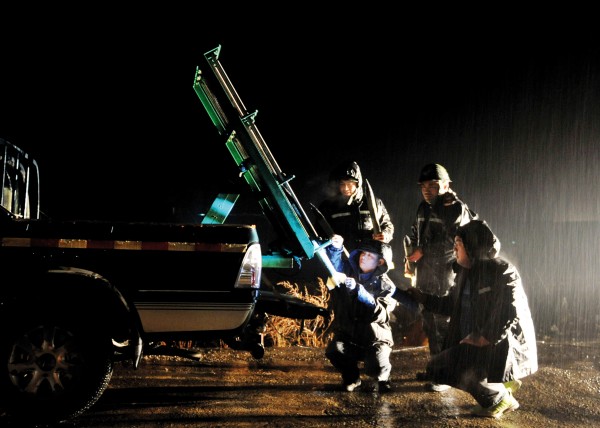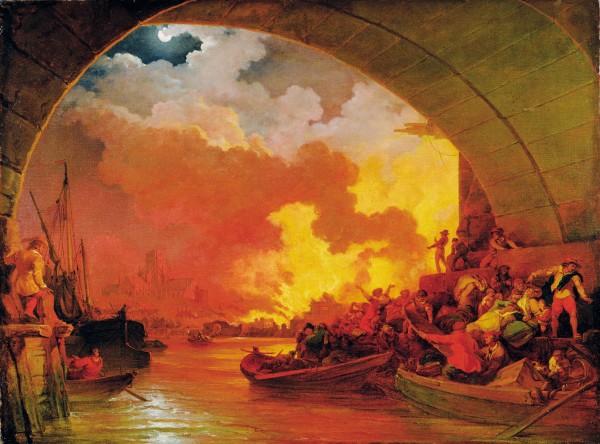Dire Strait
In Tamihana Te Rauparaha’s book about his father, he tells a story that shows the deep respect Maori people had for Cook Strait, or, as they called it, Ruakawa. When someone made their first crossing of this dangerous stretch of water, a blindfold was tied over their eyes, and they paddled the whole way across without seeing their surroundings. When they reached the far shore, they were carried to land without touching the water. Then the blindfold and the karaka leaves covering the prow of the canoe would be taken and left at a sacred place.
The message was clear: no crossing of this body of water should be undertaken lightly.
The first European to see the Strait was James Cook, from a hilltop in the Marlborough Sounds during his first visit to New Zealand. It is not clear from his journal when Cook decided to name the Strait after himself, but it is thought to have been at the urging of Joseph Banks.
When Cook first sailed into the notorious Strait he was, ironically, endangered by calms. As the wind died, a strong ebb tide carried the Endeavour up under the steep cliffs of The Brothers islands, and Cook was obliged to drop anchor in 75 fathoms. He managed to hold the ship two cable lengths away from the rocks until the tide turned.
The Strait also produced troublesome weather for Cook when he returned to New Zealand on the Resolution in 1779. Then he spent a frustrating ten days battling springtime northwest gales at the mouth of the Strait. He almost got through to Queen Charlotte Sound during a brief southerly change on November 2, but when the southerly died the northwest gale quickly returned, driving him back.
He sailed across the Strait for the shelter of the North Island, and anchored a mile southwest of Barrett’s Reef. From here he could see into Wellington Harbour, which he would have explored but for the fact that he had become separated from his sister ship, Adventure, during the gales, and was anxious to reach the agreed rendezvous site in the Sounds.
The gales caused considerable damage to the Resolution, and by the time Cook anchored in Queen Charlotte all his sails and much of his rigging needed repairs. The Adventure was not there, having been driven north by the gales as far as Tolaga Bay. She finally reached the Sounds a few days after Cook had left for the Antarctic.
Although it was the north-west wind that caused trouble for Cook in the Strait, southerly storms are more dangerous because of the large waves they cause. One of the earliest tragedies involving considerable loss of life was the sinking of the paddle steamer City of Dunedin in 1865. She left Wellington for Nelson in a heavy southerly swell and is thought to have struck rocks on the south coast. Wreckage was washed up in Palliser Bay, but no trace was found of the 40 or so people on board.
The worst shipping disaster in Cook Strait was the sinking of the interisland ferry Penguin in February 1909. On an overnight voyage from Picton, she was caught by a southerly gale. In the dark and with poor visibility she was carried north on an exceptionally strong flood tide, and struck Thom’s Rock on the south coast near karori Rock.
Although the ship sank rapidly, most of the passengers and crew got off into boats or rafts, but many of these overturned on the way to shore. There were only 30 survivors out of a total company of 105.
The most recent disaster was the sinking of the Wahine after striking Barrett’s Reef during a severe storm in April 1968. Although forewarned of the possibility of extreme weather, the ship’s master attempted to enter the harbour in deteriorating conditions. For reasons never properly understood, though possibly connected with rain or blowing spray, the ship’s radar broke down just as she was approaching the harbour mouth. After rolling badly off a big wave she became disorientated in very poor visibility, and manoeuvred in the harbour mouth for some 25 minutes before striking the rocks.
The ship immediately lost power and dropped both anchors. The wind continued to increase in force, and drove the ship up into the harbour, dragging the anchors. Paradoxically this may have saved many lives, as the death toll is likely to have been much higher than the 51 who died had the ship finally rolled over at Barrett’s Reef, rather than inside the harbour mouth.
At the time the Wahine got into difficulty, the wind at Wellington Airport was 60 knots gusting 80 knots, and peaked at 78 knots gusting 101 knots a couple of hours later. The maximum wind recorded at Oteranga Bay was 98 knots gusting 145 knots—the highest ever recorded in New Zealand.
Thankfully, not all shipping accidents in Cook Strait have ended in tragedy. One of the most dramatic narrow escapes occurred on February 2, 1936, when the Rangatira, with almost 800 people on board, struck rocks near the entrance to Wellington Harbour in a southerly storm almost as severe as that which capsized the Wahine. Again, poor visibility was a factor, with a combination of rain and driving spray masking the land. However, because of the conditions, the ship was moving very slowly when she struck, and was able to reverse off the rocks. The Rangatira then manoeuvred her way to the heads, and proceeded stern first up the harbour with the assistance of two tugs.
Although the ship took in a considerable amount of water, was down at the bow with the propellers partially clear of the water, and developed a list, she successfully reached the wharf with no loss of life or even serious injury to any of the people on board.
The longest lasting narrow escape concerned the Wanganella. On January 19, 1947, making its first trans-Tasman voyage after the war, the Wanganella struck Barrett’s Reef just before midnight and stuck fast. The weather conditions were benign, and remained so for the 18 days the ship spent on the reef. No-one was injured, and the passengers were taken off the ship the morning after the accident.
The wind near Cook Strait is often strong because the waterway is the major gap between an otherwise nearly continuous line of mountains and hills running for much of the length of New Zealand.
The extreme southerlies that drove both the Wahine and the Rangatira on to the rocks were caused by deep depressions that had originated far to the north as tropical cyclones. Instead of weakening as they moved away from the tropics—the normal course of events—they re-intensified as they changed into mid-latitude depressions a little to the north of New Zealand.
On average, northerlies outnumber southerlies about two to one through Cook Strait. This is because Cook Strait lies in a latitude where westerly winds predominate, but the westerlies are deflected by the mountains to blow north or north-west through the Strait.
The worst of the northwest gales occur in spring, as Cook found out. This is because the Southern Hemisphere westerlies are strongest in spring, as they are driven by the temperature difference between the Pole and the Equator, which is at a maximum in spring.
These springtime westerlies seem to be worst in years with either a strong El Nino or La Nina, so it is possible one of these phenomena was occurring during Cook’s visit.
The winds around Cook Strait not only pose a danger to shipping, they also affect aviation. The fragile aircraft from the pioneering days of aviation certainly had their share of grief in Wellington.
Apart from a short 50-metre hop just above wave height at Lyall Bay in 1911 by Arthur Schaef in a home-built aircraft, the first substantial flight in Wellington took place in March 1914, when Will Scotland took off from Athletic Park in his Caudron biplane. Experiencing difficulty controlling his aircraft in the turbulent winds, Scotland made for Newtown Park, but crashed into the boundary trees before he could attempt an emergency landing. The aircraft was written off, but Scotland suffered only bruises and sprains. He later claimed to have been the first person to climb down from a tree in Wellington without first climbing up it.
Scotland’s flight had been delayed for four days by continuous strong winds, and he had flown with some misgivings about the conditions, but the paying crowd had become restive with the delay.
The first flight from Auckland to Wellington took place in 1921 in a Supermarine Channel flying boat, with a live flounder in the bilge as a present for the Minister of Defence. Although the flight was successfully completed, the aircraft became the victim of a squally southerly change a week later when it rolled over at its moorings in Oriental Bay and sank.
Pulled from the water, dismantled and dried, it was sent home to Auckland on the train.

















